When two teenage boys and a college girl yearned to fly, Walter H. Beech gave them the opportunity to “learn the business” and make their dream come true.
Walter H. Beech is remembered worldwide for the airplanes that bear his name. In addition, his skills as a pilot made his name a household word during the late 1920s, and few if anyone would question his prowess as a salesman, entrepreneur and staunch champion of aviation. There is, however, another side to Mr. Beech that is often been overlooked: befriending those who truly wanted to fly.
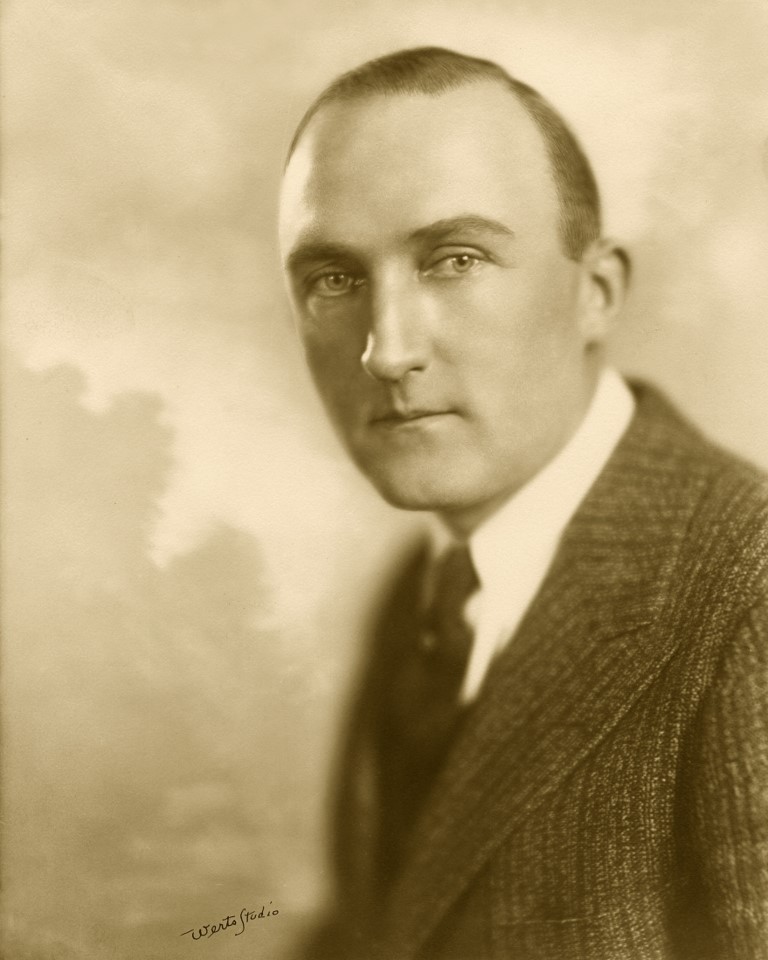
Although Walter had earned a reputation as a hard-nosed, tough and demanding individual when it came to building high quality airplanes and leading one of America’s foremost airframe manufacturers, he had a deep and generous desire to help young people enter aviation. Among those fortunate enough to receive his assistance were identical twin brothers from Wichita named Newman and Truman Wadlow, and a young lady from Arkansas named Iris Louise McPhetdridge.
By 1926 the Travel Air Manufacturing Company, Inc. (TAMC), originally co-founded by Walter Beech, Clyde Cessna and Lloyd Stearman along with a few visionary Wichita businessmen, was struggling to fill orders for its three-place, open-cockpit biplanes that included the “Model A” and “Model BW.” The tiny “factory” on West Douglas Avenue was bursting at the seams when Beech reached out to help the Wadlow boys realize their dream of learning to fly. Walter knew Truman and Newman, then only 17 years of age and still in high school, were working part-time for “Jake” Moellendick’s company on North Hillside Avenue in Wichita, building the “New Swallow” biplane.

In 1925 Walter invited the twins to leave Jake’s company and work at Travel Air, at that time one of the fastest-growing airframe manufacturers in the United States. Newman declined the offer, but Truman jumped at the opportunity. Beech promised the teen that if he worked hard selling tickets for “joy rides” on weekends at the East Central flying field, coupled with laboring after school at the factory doing odd jobs, he would be taught to fly for free! As the months passed that hot summer of 1925, Truman traded hard work for flying time under the tutelage of Travel Air’s chief pilot, Clarence E. Clark.
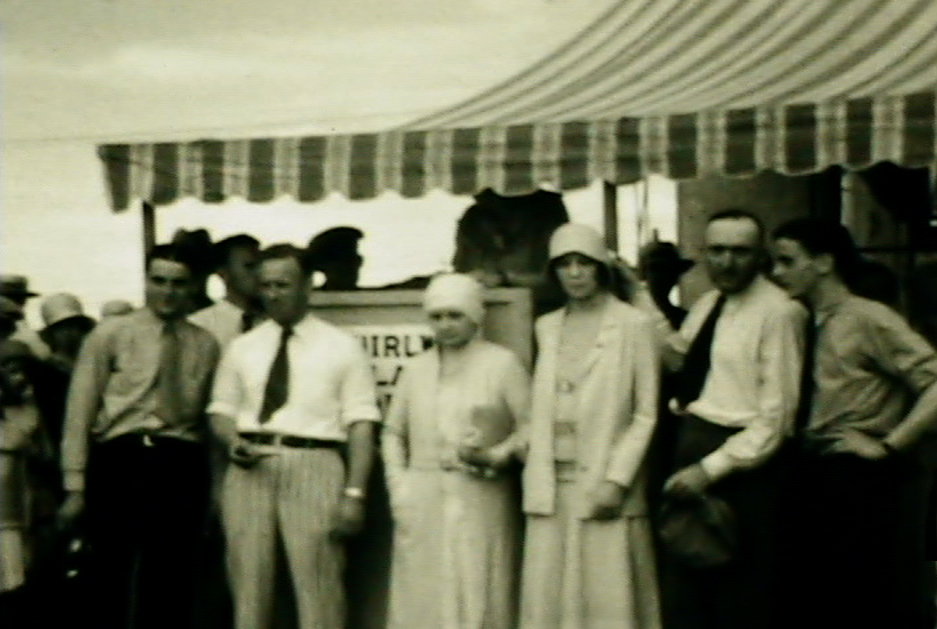
Wadlow earned his wings in a Model A powered by the ubiquitous Curtiss OX-5 engine, and after only a few hours of dual instruction, managed to solo without incident. True to his word, Walter Beech continued to support Truman’s flying, and had enough confidence in the young man that during the work week he allowed him to take paying passengers on sightseeing rides over the Wichita area. Wadlow had accumulated less than 10 hours in the air when, on a very hot afternoon in August, he carefully secured a paying passenger in the front cockpit and nursed the aging Model A into the air for an aerial tour of Wichita.
All was well as the ship climbed slowly to the north, the OX-5 chugging along at 1,400 RPM. At an altitude of about 1,500 feet, the Curtiss powerplant suddenly fell silent. Stunned and unsure what to do, the teen aviator believed he could make a 180-degree turn, glide back to the flying field and make a “dead-stick” landing. Unfortunately, as Truman banked the ship around he hauled back on the stick in an effort to conserve precious altitude. Instead, the Travel Air abruptly stalled. Truman panicked. The passenger panicked. The airplane pitched and rolled sluggishly. Desperate to regain control, Wadlow shoved the left rudder pedal to the floorboards and pulled the stick full aft.
The Model A responded eagerly and appropriately by entering a fully-developed spin to the left. Its intrepid pilot could do nothing to halt its swirling descent toward terra firma. Seconds later there was a thundering “whump” as the biplane smashed nose first into a thick hedgerow, accompanied by the sorrowful cries of cracking wood and ripping fabric. Then, all seemed quiet except for the hissing of steam escaping from the engine’s crumpled water radiator. Truman quickly regained his senses, unbuckled his seat harness, jumped out of the aft cockpit and extracted his unconscious passenger from the front seat.
Wadlow dragged the man a safe distance from the wreck and fled on foot to his home in Wichita. He was terrified of what Walter Beech would do once he found out about the accident (Beech and Clyde Cessna were notified within minutes and rushed to the crash site). Truman hid away for days. He went nowhere near the factory on West Douglas Avenue, and briefly managed to avoid facing the certain ire of Mr. Beech, not to mention possible criminal charges of negligence.
Finally, he came out of hiding and “faced the music” regarding the accident. Mr. Beech scolded the teen, not so much for seriously damaging an expensive airplane, but for exhibiting gross irresponsibility by leaving the crash scene. Truman was relieved to learn that his passenger would recover from minor injuries, but was disappointed to learn that he was banned from further flying until he received remedial training in avoiding stalls and recovering from spins. As for the Model A, it was quickly hauled back to the factory, repaired and was soon flying again at the airfield.
In addition, Walter pointed out that Wadlow’s accident not only damaged an airplane and made the fledgling company a target for a lawsuit it could ill afford, but the repairs to the Model A put a big dent in Travel Air’s bank account. Fortunately, no charges were filed, but Truman was “grounded” until further notice and was made to pay for his error by assisting workers in the final assembly, rigging and testing of production airplanes. Eventually, Mr. Beech assured Wadlow that all was forgiven and allowed him to resume flying with Clark. Truman never “spun in” again. During an interview in 1982, Truman told the author that he never forgot Beech’s unexpected benevolence toward him. Perhaps Walter remembered that in 1921 he had destroyed a Swallow soon after joining E.M. Laird’s airplane company. As Laird recalled during an interview with the author in 1982, Beech was “a pilot of limited experience” and the crash nearly bankrupted the business, but he forgave Walter and helped him grow into a competent aviator who’s flying and sales skills eventually proved invaluable to the success of the firm.
During the next three years, as Truman gained both sales and flying experience, Beech gradually gave him increasing responsibility as an assistant test pilot to Clarence Clark as well as assigning him to ferry new airplanes to Travel Air dealers and distributors from coast-to-coast. In a further demonstration of his faith in Truman’s abilities, in 1927 Walter placed him in charge of a company dealership located at the airport near St. Joseph, Missouri. During his time there, Truman learned valuable lessons in demonstrating and selling airplanes. In addition, he performed routine service and maintenance work on various types of airplanes located at the field. Truman also played an important role in helping to keep the Travel Air Type 5000 airline transports operated by National Air Transport flying on schedule.
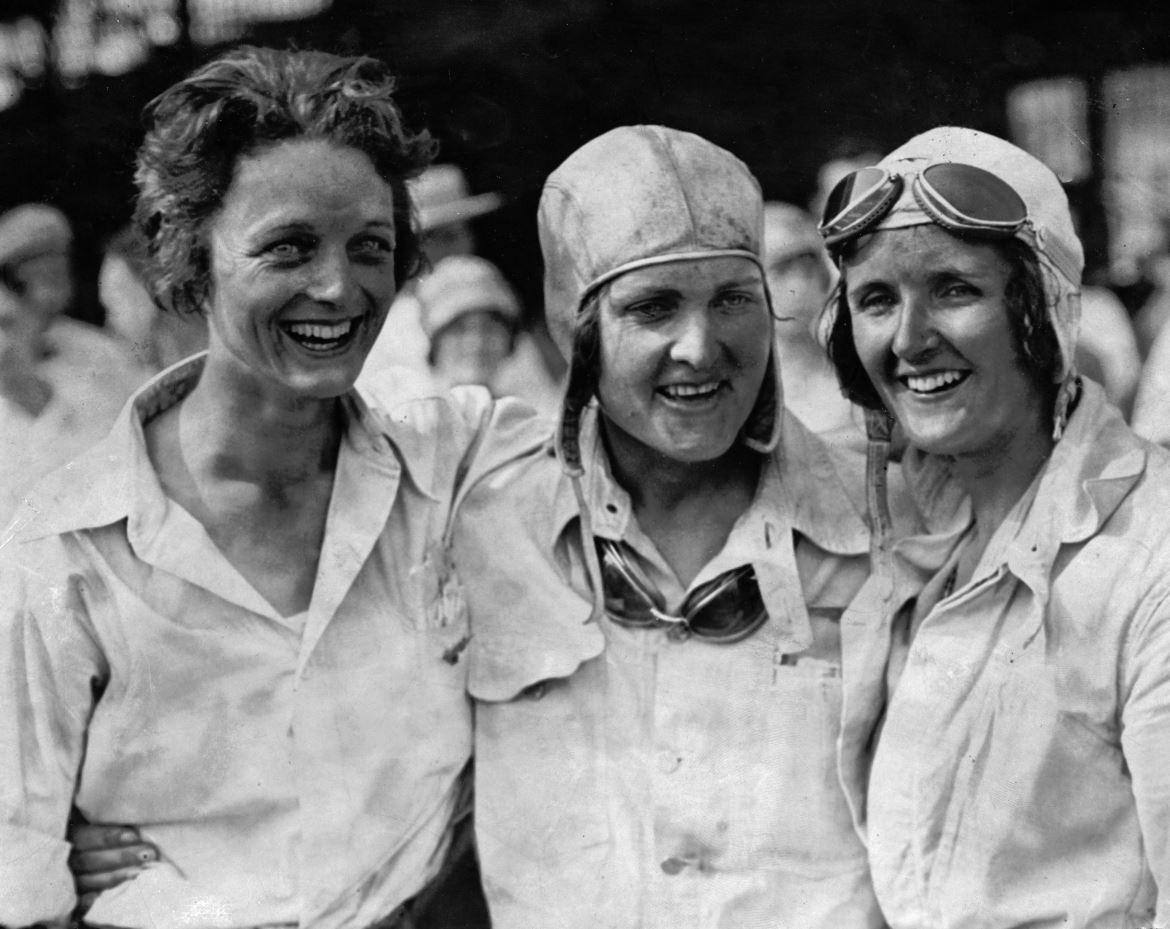
Soon after Louise Thaden’s victory in the 1929 Women’s Air Derby held in August, the Travel Air Type D4000 biplane she flew was sold to a buyer on the East Coast. Mr. Beech ordered Truman to ferry the ship, but engine problems forced him to make a forced landing that resulted in the ship flipping onto its back. Damage was minimal, but repairs made what should have been a three-day flight into one that required 14 days to complete. Although Truman remembered that trip with regret, he had no regrets about the next major assignment he received from Mr. Beech.
In 1930 Walter tapped Truman to fly a factory-fresh Curtiss-Wright/Travel Air 6B “Sedan” in the sixth annual “National Air Tours for the Edsel B. Ford Reliability Trophy” (commonly called “the Ford Tour”). Walter Beech was counting on Truman to make Travel Air proud by scoring as many points as possible during the cross-country journey. Beech himself would be flying a Curtiss D-2 “Kingbird” twin-engine transport accompanied for part of the Tour by none other than his wife, Olive Ann Beech, and Curtiss-Wright salesman Owen G. Harned.
The route chosen for the 1930 event began at Dearborn, Michigan, and wound its way across much of vast Western United States and north into Canada before returning to Dearborn – a total of more than 4,800 statute miles. At the end of the grueling 17-day aerial trek, Walter Beech placed sixth while Truman managed a respectable ninth-place finish. The two Curtiss-Wright pilots collected $1,000 and $400, respectfully, for their efforts.
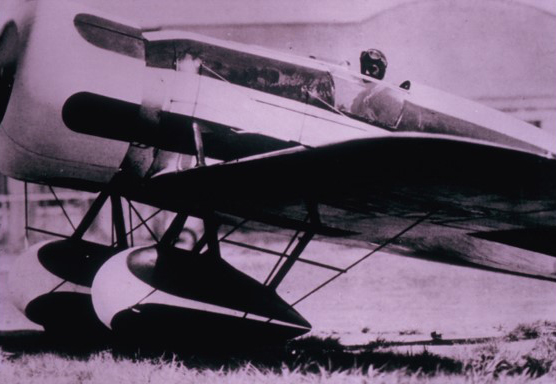
By 1931 the deepening economic depression that gripped America had devastated the aviation industry, and the factories of Travel Air, Cessna Aircraft Company and the Stearman Aircraft Company were operating at a snail’s pace compared with the halcyon days of 1929. Despite the dark financial outlook, Walter Beech was an investor in Central Air College located at the East Central Flying Field. In 1929 the company built a massive, modern hangar across the field from the Travel Air factory complex, but by 1931 the business faced bankruptcy.
Eager to make their mark in Wichita aviation circles, Truman and Newman Wadlow approached Walter Beech about taking over the former school’s aircraft and facilities. They would call their new venture the “Wadlow Brother’s Flying Service,” but they needed a healthy infusion of cash to make their dream come true.
Beech had sufficient confidence in the two brothers to co-sign a note for $25,000, and within a few weeks they were in business. The Wadlows offered flight instruction as well as air taxi and charter flights, and their “air fleet” of six ships included Travel Airs, a Ryan “Brougham,” Curtiss-Wright “Robin” and other aircraft. One of the Travel Air cabin monoplanes had a history worth mentioning: Charles A. Lindbergh asked Walter Beech if he could use the airplane to fly to Mexico City, where he was courting Ann Morrow, daughter of United States Ambassador to Mexico, Dwight Morrow.
When Lindbergh returned the ship, the Wadlows found a way to capitalize on its brief association with Lindbergh and Ann Morrow. They named the monoplane “The Romancer” and emblazoned the tantalizing title on both sides of the fuselage. They advertised the airplane as a unique venue for courting couples as well as performing aerial nuptials, and a number of weddings were performed while airborne above Wichita (both brothers “romanced” their future wives in the ship). The Wadlow Brother’s Flying Service managed to survive until 1933 when the Great Depression forced the twins to close the doors and seek other aviation endeavors. Both brothers eventually went to work once again for Walter Beech, who had returned to Wichita in 1932 and established the Beech Aircraft Company.1
Not long after Mr. Beech had helped Truman and Newman Wadlow take their first steps toward a career in aviation, a pretty college graduate named Iris Louise McPhetridge came to Wichita and took employment with Jack Turner’s company selling coal, fuel oil and construction materials. Although she proved to be a loyal and hard-working employee, she gradually developed a habit of stopping at the Travel Air factory. As her visits increased in frequency, Louise was branded a nuisance by the men working on the production line and in back shops. Undaunted, Ms. McPhetridge kept up her visits.
Hailing from Bentonville, Arkansas, Louise was fascinated by flying machines, how they were built and the daring aviators who flew them. As her curiosity increased, so did her unauthorized stops at the Travel Air facilities. Late in 1926 she realized her true dream was not medicine, which she had studied in college, but the desire to fly. One cold day in December she was caught by her boss at the flying field, watching with great interest as Clarence Clark flew the latest Travel Air, the Type 5000 cabin monoplane, on its maiden flight. Fearing that she would lose her job, or at the least be scolded severely for dereliction of duty, Louise was surprised when Jack Turner laughed and told her to stay and witness the flight.
The next day she was called into Turner’s office. Certain that a reprimand would be followed by unemployment, Ms. McPhetridge was told to sit down and answer a few questions regarding her interest in aviation. Turner concluded their conversation by saying that he would talk with his friend Walter Beech to determine if Beech could help Louise win her wings. A few days went by before Walter called her on the telephone and arranged a meeting between himself, Louise and D.C. Warren, a new Travel Air distributor based in Oakland, California. Beech explained that her serious interest in flying had impressed him, and after much consideration, he had an offer he hoped she would not refuse.
Warren agreed to take Louise out west with him and teach her the aviation business. It would mean long hours and hard work, but she would receive flying lessons at no expense to her. Louise could hardly believe what she was hearing! Saying farewell to her family in Arkansas and her job in Kansas, on April 2, 1927, McPhetridge climbed into the front cockpit of a new Model B biplane and accompanied Warren on the long flight westward. In her autobiography, “High, Wide and Frightened,” published in 1938, Louise vividly describes how she learned to fly and eventually became manager of Warren’s satellite facility in Oakland, California. Along the way she met and married Herbert von Thaden, a talented aircraft designer and pilot who shared her love of flying.
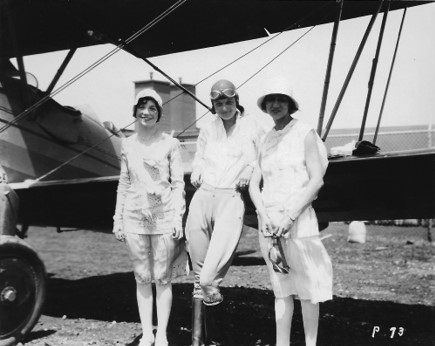
A year after leaving Wichita, Louise had gained sufficient experience in the air to attempt an assault on the women’s altitude record. Her airplane of choice, of course, would be her favorite mount – a Travel Air Type 3000 powered by a Wright-Hispano Suiza V-8 engine rated at 180 horsepower. Louise and the company’s mechanics, whom she worked with almost every day and shared their dirty hands working on airplanes, had rigged the airframe, tuned the engine and equipped the open cockpit with a very crude supplemental oxygen system based largely on hospital equipment.
Donning her heavy, fur-lined flying suit, leather helmet, goggles and gloves, Mrs. Thaden clambered into the aft cockpit. Mechanics swung the prop and the Wright-Hispano came to life, belching puffs of smoke before settling into a steady, staccato idle. Minutes later Louise and the Type 3000 were airborne, climbing steadily over the Oakland airport. For more than an hour she nursed the biplane upward, eventually reaching an indicated altitude of 27,000 feet according to one altimeter, but another altimeter indicated 29,000 feet.
The engine was gasping for breath and the wings had given up their last shred of lift. As she tried in vain to nurse the ship just a little higher, she slowly succumbed to hypoxia because of the frozen oxygen equipment, and lost consciousness. Fortunately, she regained consciousness at 16,500 feet as the Travel Air roared earthward in wide spirals at the rate of 1,500 feet per minute. Taking control, Thaden began a long descent back to the flying field.
When the barograph was removed from its perch in the fuselage, officials of the National Aeronautic Association, which had sanctioned the attempt, confirmed that Louise had attained an altitude of 20,200 feet. She now held the altitude record for women, and later followed up that feat by capturing the women’s records for speed (156 mph) and endurance (22 hours 33 minutes). Thaden was the only female aviator to simultaneously hold all three records, albeit only briefly.

Two of Louise Thaden’s most significant accomplishments, however, were her victory in the 1929 Women’s Air Derby, and along with co-pilot Blanche Noyes, took first place in 1936 Bendix cross-country from New York City to Los Angeles, California. The Derby was held in August 1929. The 20 women pilots took off from Santa Monica, California, and flew a circuitous route to Cleveland, Ohio, site of that year’s annual National Air Races. Thaden flew a specially-prepared Travel Air Type D4000 biplane fitted with “speed wings,” an NACA cowling around the 300-horsepower Wright J6-9 static, air-cooled radial engine, and carried race number “04” for the event. Thanks largely to careful dead-reckoning navigation and a reliable airplane, Louise placed first in the heavyweight airplane class after flying 2,500 miles during a period of 10 days. Her friend and well-known aviatrix, Phoebe Omlie, won the lightweight class in her Velie-powered Monocoupe.
By 1936 Louise was working for the Bureau of Air Commerce when she received a telephone call from an old friend, Olive Ann Beech. She wanted Louise to enter the Bendix Trophy race, which was allowing women to compete directly with men for the first time in the event’s history. Walter Beech agreed to the proposal, and aviatrix and close friend Blanche Noyes was tapped as Thaden’s co-pilot and navigator.
Walter provided the duo an essentially stock Beechcraft Model C17R “Staggerwing” as their mount. Departing Floyd Bennett airport near New York City in the early hours of September 4, Louise and Blanche cruised across the nation, stopping only for fuel at preplanned points, including one at Wichita. After a relatively uneventful journey of 14 hours 55 minutes, the two women were stunned to learn that the C17R was the first to land at Mines Field near Los Angeles, beating a field of highly respected men and women pilots. In addition, they had established a transcontinental record (east-west) for women.
In the years ahead, Louise never forgot that Walter Beech was chiefly responsible for not only helping her enter aviation, but also for his guidance and friendship until his death in 1950.
Notes:
- In the mid-1930s Walter Beech sent Truman Wadlow to California, where he became a Beechcraft distributor. During World War II he flew military transport missions with the United States Army Air Forces in the United States and Europe. After the war he flew as a corporate pilot for Phillips Petroleum, flying alongside his former instructor, Clarence Clark. Truman died in 1993. Newman Wadlow flew in the 1929 Ford Tour in a Travel Air Type 6000B, accompanied by Ralph Nordberg, director of public relations for the company. As with his twin brother, Newman had a distinguished career in corporate and private aviation, flying and selling airplanes until his retirement in the mid-1980s. He died in 1989. Both brothers were inducted into the Oklahoma Aviation Hall of Fame in 1983.
- In 1929, Louise became the fourth woman in the United States to earn a Transport License, and later that year, together with Amelia Earhart and other female pilots, established the Ninety-Nines – a unique organization aimed at inspiring women to fly. During the early 1930s Thaden worked for Walter Beech, demonstrating the Model 17 biplane to potential customers. In 1934 Louise was hired by the Bureau of Air Commerce to promote the marking of airports in the Western United States to help pilots determine their location. During World War Two she was active in the Civil Air Patrol. Louise Thaden died in 1979.
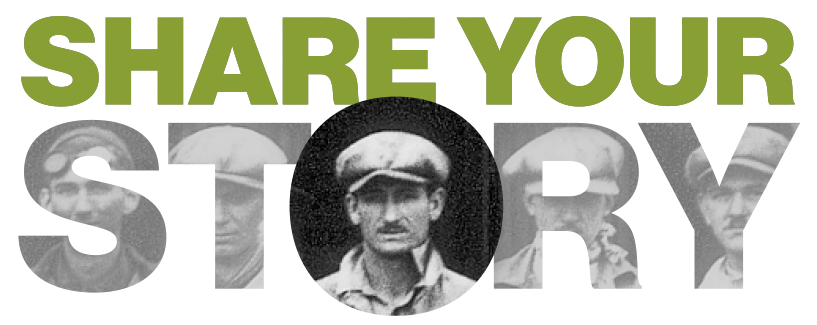
 Back
Back